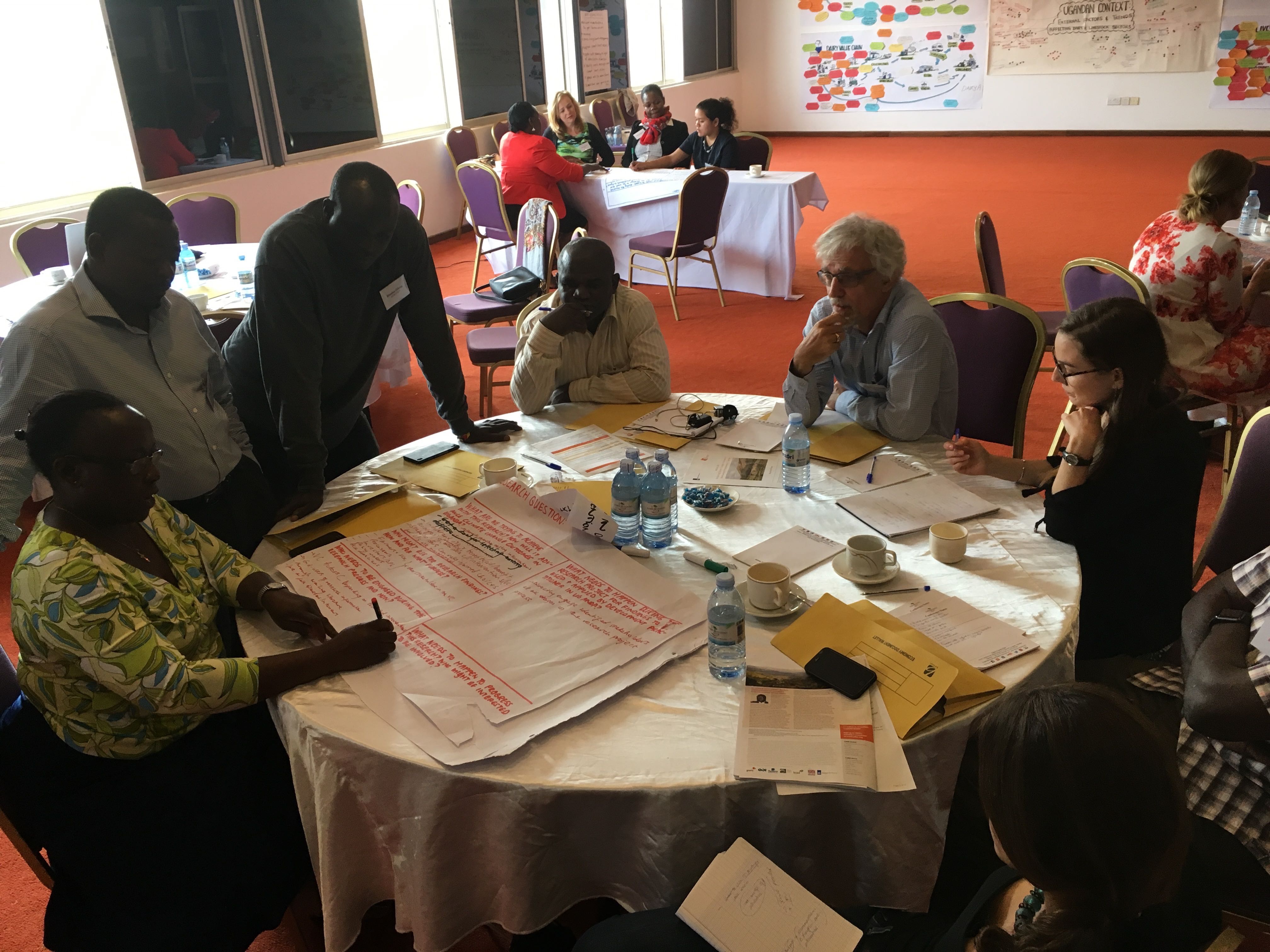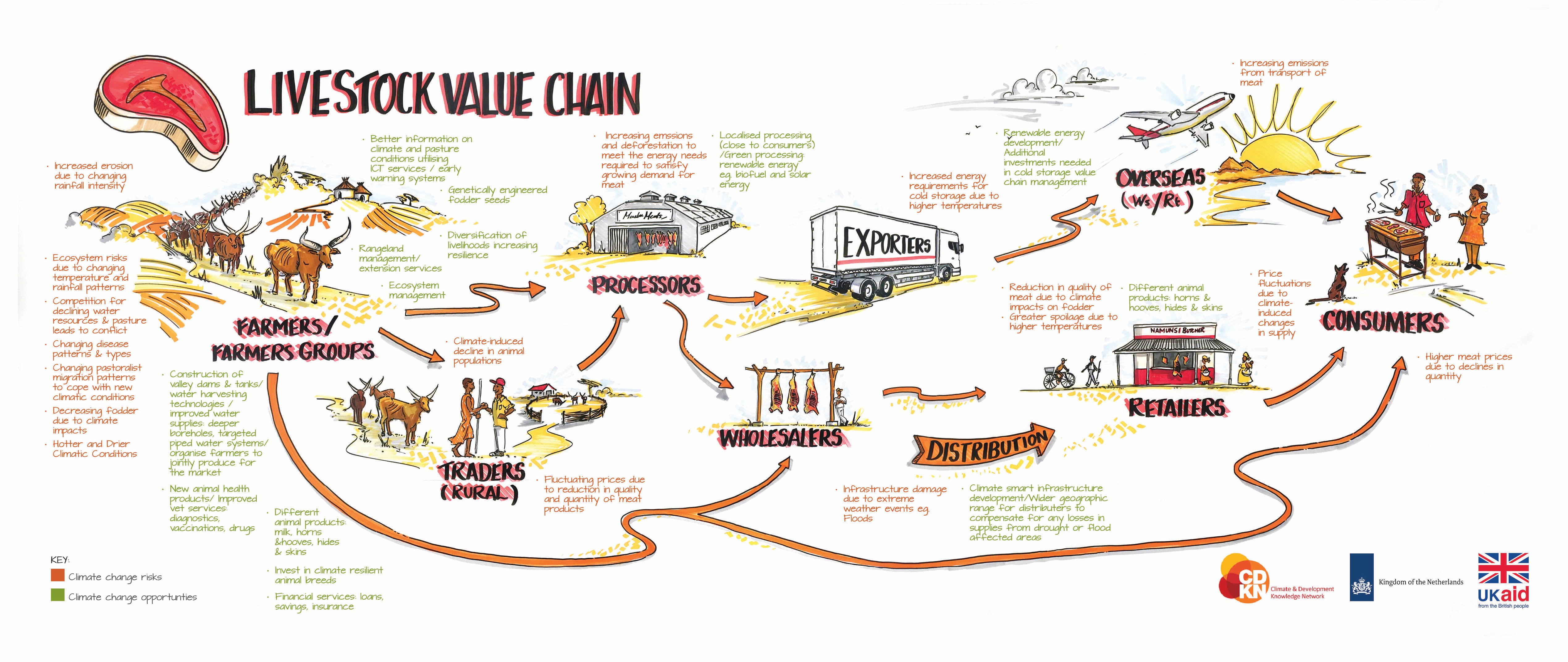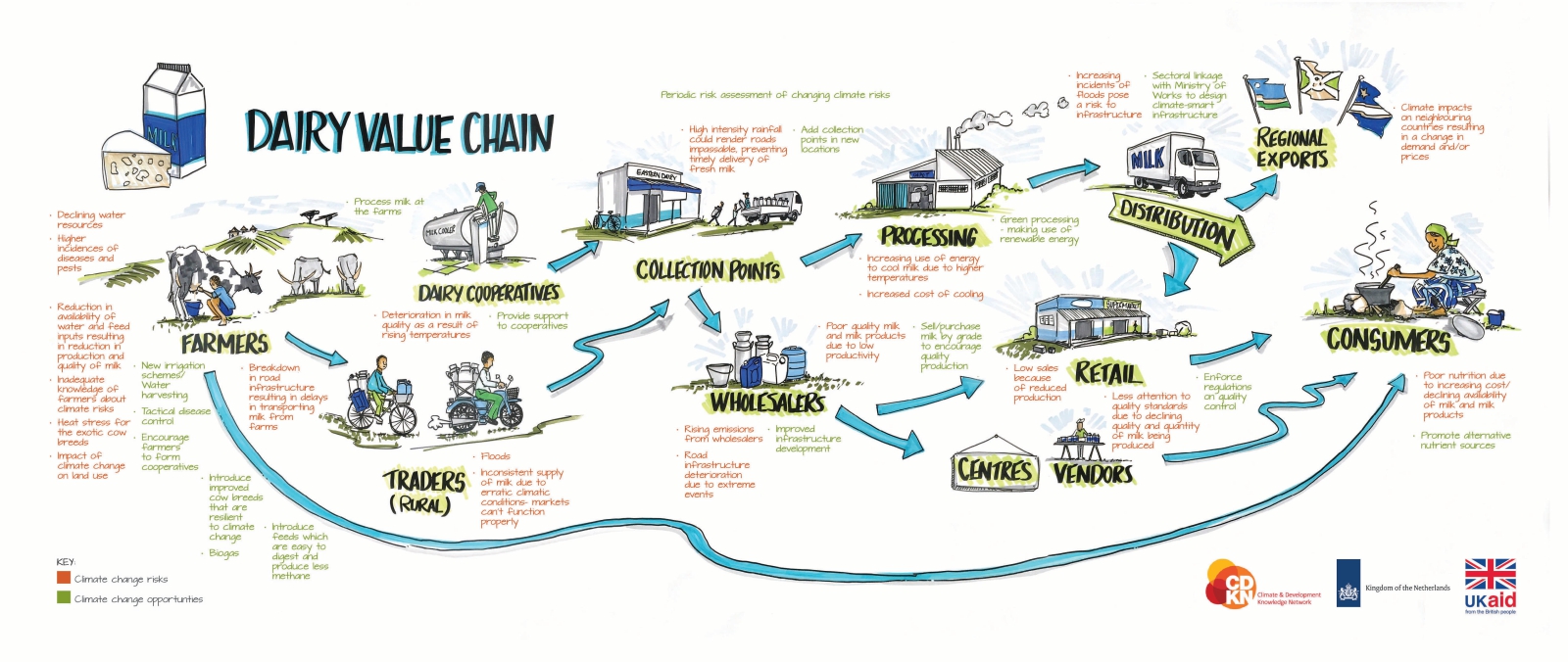Uganda Action Lab - developing climate smart value chains in the dairy and livestock sectors
Uganda Action Lab - developing climate smart value chains in the dairy and livestock sectors
CDKN and the Netherlands Embassy co-hosted an Action Lab from 13 – 14 September 2016 in Kampala. The purpose of the Action Lab was to bring together development practitioners from government, donors, research organisations and implementation partners to collaboratively identify research questions and other actions, which could enhance climate change outcomes for Uganda. One of the topics discussed was how to climate smart the dairy and livestock value chains in Uganda. Suzanne Carter and Rachel Phillips share some key messages that emerged from the Action Lab below.
Dairy and livestock are two important value chains in Uganda, both from an economic and socio-cultural viewpoint. The ownership of cattle holds special significance and demonstrates a man’s wealth and importance in society. Although this is changing to some extent, we know that in Uganda cattle are here to stay. So how do we encourage more climate smart interventions to be adopted all the way along the value chain?
 During the Action Lab we worked in small groups to develop models of what a climate smart value chain might look like; we mapped onto a large poster of each value chain where there are climate risks and impacts, alongside some of the adaptation and mitigation opportunities to make the value chain more climate smart.
During the Action Lab we worked in small groups to develop models of what a climate smart value chain might look like; we mapped onto a large poster of each value chain where there are climate risks and impacts, alongside some of the adaptation and mitigation opportunities to make the value chain more climate smart.
The maps of the value chain showed that there was better understanding of the climate risks on the production end of the value chain, but less understanding of the risks and opportunities higher up the value chain (e.g. processing, distribution, retail and for consumers). They highlighted that most of the current activity is also concentrated at the production end of the value chain, suggesting that more attention needs to be given to the rest of the value chain. In discussions, it was recognised that interventions at the consumer end have the potential to create changes lower down the value chain (pull factor) and that this is a a good leverage point.
The mapping also captured a lot of projects and research that are already happening in the dairy and livestock value chains, but there was not much awareness of the various ongoing initiatives.
Overall reflections from the modelling included an emphasis on how important it is to understand the different actors along the supply chain: who is most vulnerable?; how to best engage with different actors; how to build trust to work together; and finally identifying and building partnerships that can create change. We also acknowledged that gender dynamics need to be considered in our development planning approach to ensure that projects look at impacts on both men and women when rolling out climate smart interventions.
There was a recognition of how important it is to build a common understanding of what ‘climate smart success’ looks like, how it can be measured and what it is for different players.
 Building upon this idea discussions underlined the value of creating partnerships which lead to more climate smart approaches up and down the value chain. In identifying the adaptation and mitigation potential, it became clear that economic opportunities arise in the development of climate smart value chains and these create opportunities for the private sector to increase their engagement. However, we don’t yet understand enough about the trade-offs and how interventions can impact on other parts of the value chain, or about the impact of private sector engagement on the informal / formal dynamics of the current value chains. Understanding these risks is important to enable the private sector to make informed investment decisions.
Building upon this idea discussions underlined the value of creating partnerships which lead to more climate smart approaches up and down the value chain. In identifying the adaptation and mitigation potential, it became clear that economic opportunities arise in the development of climate smart value chains and these create opportunities for the private sector to increase their engagement. However, we don’t yet understand enough about the trade-offs and how interventions can impact on other parts of the value chain, or about the impact of private sector engagement on the informal / formal dynamics of the current value chains. Understanding these risks is important to enable the private sector to make informed investment decisions.
There was appetite amongst participants to apply the Action Lab technique in other contexts, at project level and also at national level - for example engaging the Dairy Development Authority to convene a national process. There was also interest to use the technique in other topics beyond agriculture.
For further information about the Action Lab and its outputs, please visit CDKN’s Action Lab page. We will be making the climate smart value chain models developed during the workshop available soon, as well as other outputs.
See the risks and opportunities the two value chains by clicking on the images:


